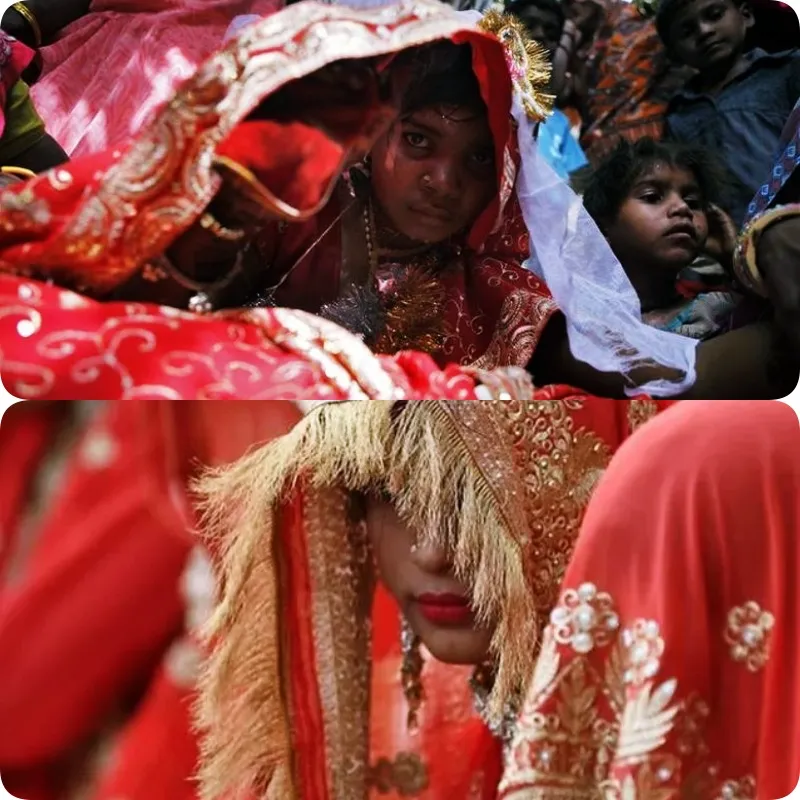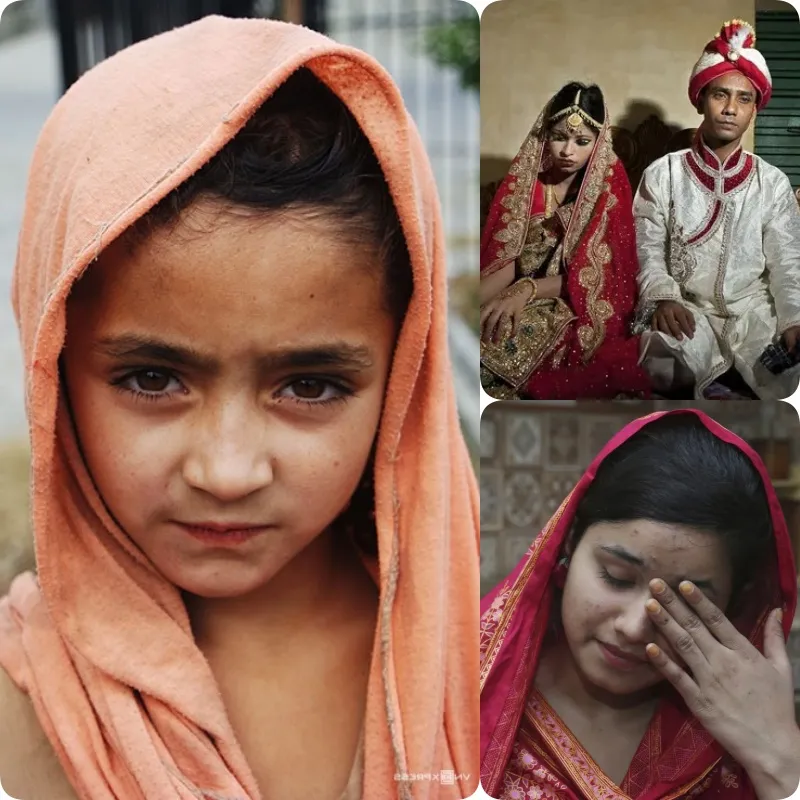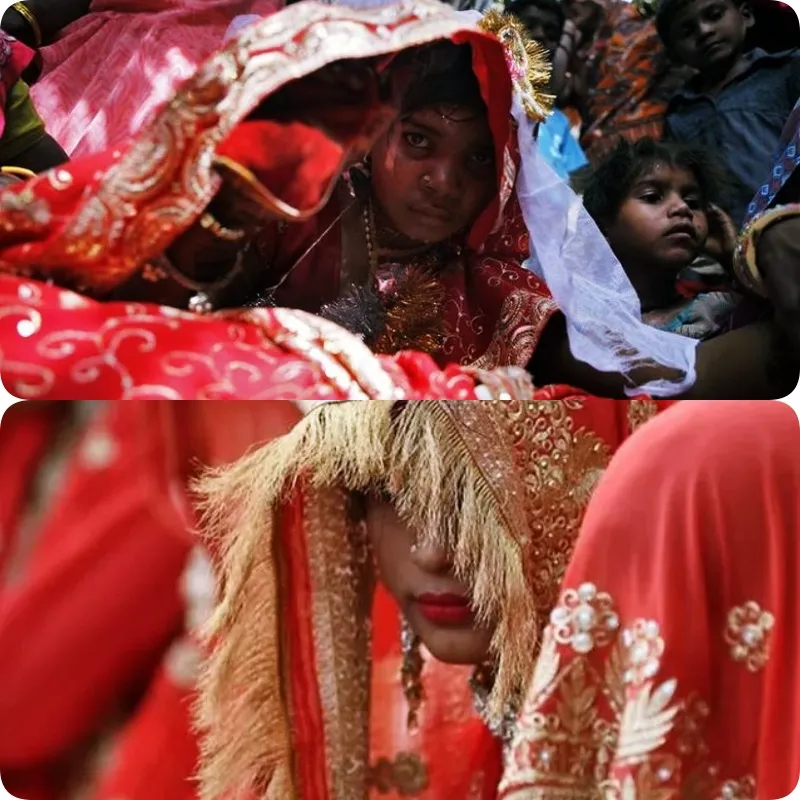“Brides of the Monsoon” – A Battle for Survival Amidst the Floods

“Brides of the Monsoon” – A Battle for Survival Amidst the Floods
In Pakistan, the onset of the monsoon season often marks a desperate time for many families. For Shamila, 14, and her younger sister Amina, 13, this season brings more than just rain; it brings the grim reality of forced marriages as a means of coping with poverty exacerbated by flooding.
Shamila, who is set to marry a man twice her age, expresses her initial relief at the prospect of marriage, hoping it will lead to a better life. Her mother-in-law, Bibi Sachal, has provided Shamila’s family with $720, a significant sum in their village where most families survive on just $1 a day. Although the rate of child marriage in Pakistan has been decreasing in recent years, the historic floods of 2022 have once again pushed the rate of child marriages upward due to economic instability.

The period from July to September is critical for the livelihoods of millions of farmers in Pakistan. Climate change is lengthening the monsoon season, increasing the risks of landslides, flooding, and long-term damage to crops. Many villages in Sindh, a southern province, have yet to recover even after two years. The floods submerged one-third of the country, displacing millions and destroying crops.
Mashooque Birhmani, the founder of the child marriage prevention organization Sujag Sansar, explains that the dire situation has led to the phenomenon of “monsoon brides.” “Families will resort to any means to survive,” he says. “The first and easiest option is to marry off their daughters for money.”
In Khan Mohammad Mallah village, Shamila and Amina were married off during a mass wedding ceremony in June. Last monsoon season, 45 underage girls in the village were also married off. Najma Ali, now 16, married two years ago with hopes for a better future. Her parents received $900 for the wedding, a debt her husband is unable to repay. “I thought I would have lipstick and clothes,” says Najma, holding her 6-month-old baby. “But now we don’t even have food.” The village, situated by a canal in the barren Main Nara Valley, is plagued by pollution and a lack of fish.

Najma’s mother, 58-year-old Hakim Zaadi, recalls a time when their land was fertile, growing rice and vegetables, but all crops have perished due to soil contamination. In the past, daughters were not seen as a burden. Now, young brides with children often return to live with their parents as their husbands are unemployed.
Child marriage is prevalent in certain areas of Pakistan, which ranks sixth globally for the number of children married before 18, according to government data released in December. The legal marriage age in Pakistan is 16-18. While UNICEF has reported significant progress in reducing child marriage rates, extreme weather is creating new risks. The organization predicts an 18% increase in child marriage rates, potentially erasing five years of progress.
Dildar Ali Sheikh, 31, planned to marry off his 10-year-old daughter Mehtab while living in a flood relief camp. “At least she will have food and basic amenities,” he says. The night before Mehtab was to leave for her husband’s home, her mother, Sumbal Ali Sheikh, was unable to sleep. The NGO Sujag Sansar intervened, postponing the wedding. Mehtab has been enrolled in a sewing class, but as the monsoon approaches, she remains haunted by the prospect of marriage. Mehtab tells her father she wants to continue her education. “I see the difficulties faced by the girls who are already married around me,” she says. “I don’t want my life to be like that.”



